Saaz Aggarwal's Blog, page 6
June 8, 2014
The Last Wave by Pankaj Sekhsaria
Island Purgatory
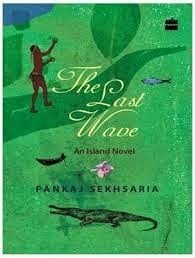 The Last Wave is set in one of the most beautiful, pristine places on this earth. Its primary characters are a young man and woman – a gentle, sincere, capable pair. We travel with them through the Andamans, experience its complex environment, its many distinct and exotic communities, learn about its fascinating history, and observe life, administration, ‘development’ and tourism on the islands.
The Last Wave is set in one of the most beautiful, pristine places on this earth. Its primary characters are a young man and woman – a gentle, sincere, capable pair. We travel with them through the Andamans, experience its complex environment, its many distinct and exotic communities, learn about its fascinating history, and observe life, administration, ‘development’ and tourism on the islands.
The Last Wave is not a romantic novel only because it has a young hero and heroine who encounter each other in this honeymoon paradise. It is also the romance of its author with a place he loves and has worked for decades to protect, and for whose survival he fears. The novel was launched in Pune yesterday and I felt honoured when Pankaj Sekhsaria invited me to be ‘in conversation’ with him at the event.
I had met Pankaj years ago, I think it was 1996 or 97, to profile him for a glossy magazine called Marwar, a short meeting with a lasting impact. What I learnt from Pankaj about the Andamans in our hour together all those years ago stayed with me, and I passed on the message to whomever I could, whenever I could. The message was basically the manner in which the indigenous peoples of the Andamans were being colonized by the government and and the people of India, and robbed of their culture and dignity. As a people ourselves recently freed from colonial yoke and all too conscious of the loss of our own precious heritage, making do as we are with our veneer of superimposed non-native culture, many like me have felt sad, and helpless to repair the damage that has been done or even prevent the continuing damage.
Reading Pankaj’s book and marvelling at the many situations which he worked in to show different aspects of the islands, I wondered whether he had written it as a means to reach out to more people to share the Andamans tragedy, and some of the questions I asked him at the launch were aimed at finding out whether this was so. What I understood from Pankaj's replies was that his novel was a purely creative enterprise; an attempt to put all that he knew about the Andamans into a fictional setting, and not particularly aimed at creating awareness or social change. However, while I did find it an engrossing story, the biggest value I got from it was the enormous amount of information it has. I also feel that this is an extremely important book for the way in which it entertains readers while giving us insights into different ways of living, and showing us the delight and wealth of being sensitive to and promoting cultures radically different from our own.

 The Last Wave is set in one of the most beautiful, pristine places on this earth. Its primary characters are a young man and woman – a gentle, sincere, capable pair. We travel with them through the Andamans, experience its complex environment, its many distinct and exotic communities, learn about its fascinating history, and observe life, administration, ‘development’ and tourism on the islands.
The Last Wave is set in one of the most beautiful, pristine places on this earth. Its primary characters are a young man and woman – a gentle, sincere, capable pair. We travel with them through the Andamans, experience its complex environment, its many distinct and exotic communities, learn about its fascinating history, and observe life, administration, ‘development’ and tourism on the islands.The Last Wave is not a romantic novel only because it has a young hero and heroine who encounter each other in this honeymoon paradise. It is also the romance of its author with a place he loves and has worked for decades to protect, and for whose survival he fears. The novel was launched in Pune yesterday and I felt honoured when Pankaj Sekhsaria invited me to be ‘in conversation’ with him at the event.
I had met Pankaj years ago, I think it was 1996 or 97, to profile him for a glossy magazine called Marwar, a short meeting with a lasting impact. What I learnt from Pankaj about the Andamans in our hour together all those years ago stayed with me, and I passed on the message to whomever I could, whenever I could. The message was basically the manner in which the indigenous peoples of the Andamans were being colonized by the government and and the people of India, and robbed of their culture and dignity. As a people ourselves recently freed from colonial yoke and all too conscious of the loss of our own precious heritage, making do as we are with our veneer of superimposed non-native culture, many like me have felt sad, and helpless to repair the damage that has been done or even prevent the continuing damage.
Reading Pankaj’s book and marvelling at the many situations which he worked in to show different aspects of the islands, I wondered whether he had written it as a means to reach out to more people to share the Andamans tragedy, and some of the questions I asked him at the launch were aimed at finding out whether this was so. What I understood from Pankaj's replies was that his novel was a purely creative enterprise; an attempt to put all that he knew about the Andamans into a fictional setting, and not particularly aimed at creating awareness or social change. However, while I did find it an engrossing story, the biggest value I got from it was the enormous amount of information it has. I also feel that this is an extremely important book for the way in which it entertains readers while giving us insights into different ways of living, and showing us the delight and wealth of being sensitive to and promoting cultures radically different from our own.

Published on June 08, 2014 00:37
May 24, 2014
The King's Harvest by Chetan Raj Shrestha
Sheer brilliance
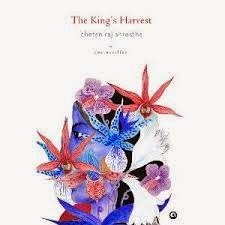 There is a sheer brilliance to the fabric of this book that goes beyond its obvious function of being the best ever companion volume for a visit to Sikkim.This brilliance shines through its skillful use of language, the details of description of landscape and incident (precise but unobtrusive); the insights into the lives and minds of the characters; the turns of engrossing plot, and so on. I think I enjoyed The King’s Harvest even more than I’d enjoy an actual trip to Sikkim (set like a ruby on a knuckle between Nepal and Bhutan).
There is a sheer brilliance to the fabric of this book that goes beyond its obvious function of being the best ever companion volume for a visit to Sikkim.This brilliance shines through its skillful use of language, the details of description of landscape and incident (precise but unobtrusive); the insights into the lives and minds of the characters; the turns of engrossing plot, and so on. I think I enjoyed The King’s Harvest even more than I’d enjoy an actual trip to Sikkim (set like a ruby on a knuckle between Nepal and Bhutan).This book consists of two novellas: An Open-and Shut Case, and The King’s Harvest. Between the two, we experience urban and rural Sikkim and, by virtue of the essential nature of travel on its winding roads, also come in close contact with all that lies in between. Along the way we observe great natural beauty, denuded forests and remote wilderness. We witness lives of abject rural poverty as well as the abundance of the land, the joys and rigours of monastic life, and the clutter of haphazard civic development in areas where people play tambola and aspire to upward mobility. We learn that cleansing is forbidden when attacked by leeches, for a wiped-out leech is bound to be replaced by a hungry one. We understand that the ephemeral nature of reality is not just intrinsic to this terrain but also that its people are steeped in the consciousness of this reality.And this book is strewn with humour and irony. In fact, our first major event in this Shangri-La is a most gruesome murder, and every aspect of that open-and-shut case is strewn with humour and irony. This is equally true of The King’s Harvest, from its basic premise, all through the journey it takes us on, and right down to the children’s names. One of the things I admired most about this book is that, set as it is in a small, landlocked region, it is inhabited by a wide spectrum of humanity. In fact, two of the central characters determinedly represent opposite ends of this spectrum. Dechen OC may be a small-town policewoman, but she has sophistication embedded in her mindset, language and even lifestyle. Tontem, on the other hand, is an exaggerated parody of rusticism and gullibility.I can’t wait to read what Chetan Raj Shrestha turns out next.

Published on May 24, 2014 21:52
May 20, 2014
Healer: the biography of Dr Prathap Chandra Reddy by Pranay Gupte
The foolish reviewer
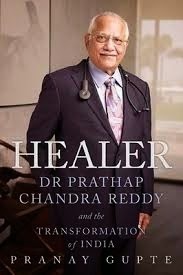 A friend sent me this message a short while ago, something she saw on facebook:
A friend sent me this message a short while ago, something she saw on facebook:
I logged on to facebook and was bemused to find that the author of Healer had posted this comment along with a photograph (a rather glamorous photograph, if you want to know the truth) of me.
It’s not nice to spit and scratch in public, no? So I did ‘like’ on the comment. Then I found my better self suddenly pulled under, and I posted. Yes, it was a sponsored link, and yes that’s the rest of the dialogue, verbatim, at the time of going to press:

 A friend sent me this message a short while ago, something she saw on facebook:
A friend sent me this message a short while ago, something she saw on facebook:Does anyone know who Saaz Aggarwal is? Well, let me tell you: She's a Pune-based writer who "reviewed" my biography, Healer: Dr Prathap Chandra Reddy and the Transformation of India (Penguin) for Hindustan Times. In my opinion, I wonder if she actually read the 600-page book. For example, she says I did not deal with health insurance! Whaaa? There's an entire chapter on health insurance. And so on. Ordinarily, I ignore foolish reviewers on the grounds that they are, well, foolish, and that they have some sort of agenda. But this so-called review is egregiously misinformed. It misrepresents my book. The next time that Manjula Narayan, books editor of Hindustan Times, makes assignments, she should at least insist that reviewers read a book before "reviewing" it.My ‘review’ of this book actually appeared in Hindustan Times on 5 April 2014, and if you like you can read it here: http://www.hindustantimes.com/books/booksreviews/book-review-healer-a-biography-of-dr-prathap-c-reddy/article1-1204417.aspx
I logged on to facebook and was bemused to find that the author of Healer had posted this comment along with a photograph (a rather glamorous photograph, if you want to know the truth) of me.
It’s not nice to spit and scratch in public, no? So I did ‘like’ on the comment. Then I found my better self suddenly pulled under, and I posted. Yes, it was a sponsored link, and yes that’s the rest of the dialogue, verbatim, at the time of going to press:
Saaz: Uh oh Pranay Gupte ... this SPONSORED link misses a few other things I said in my review:I've been away from this blog for far too long. Thank you, Pranay Gupte, for getting me back to it.
Presented in the form of the author’s year-long journey in writing it, this book is too long. Besides biographical data, it has irrelevant information about each interview. Must Dr Reddy’s biography (and the transformation of India) include a description of the interiors of Sheila Dikshit’s ‘lovely bungalow in the Lutyens Zone in New Delhi’? Or the CV of the architect of Apollo and information about his leisure pursuits? In an interview with Richard M Cashin Jr of a New York equity firm, why is his experience at a random cocktail party, and even the song he sang there, mentioned in this book? Most of the interviews are weighed down with superlative testimonials more suited to a marketing brochure than a biography, and fail to create the impact of an intimate personal encounter: “Dr Reddy possesses great strength of character”; “the so-called learning curve happens faster at Apollo than anywhere else I have seen”; and dozens more. Removing this and the rather excessive repetition (that Dr Reddy’s granddaughter Upasna Kamineni married Ram Charan Teja, ‘superstar’ Chiranjeevi’s son, appears four times) would have made this book easier on the wrist.And a whole lot of other stuff I LIKED about your book too :-)
Pranay: Well, I appreciate your response, Saaz. Cheers from Delhi, and I hope we meet in more pleasant circumstances.
Saaz: What I wrote was a measured, balanced review AFTER reading, making notes and mulling on every page in your book. What you've done here is post a slanderous comment along with my photograph. Nice, eh! (Incidentally, I never said that you "did not deal with health insurance". What I said was, "Controversial topics such as vaccinations, the impact of health insurance and tort, and the basic concerns of access and affordability to best-quality medical care for the majority of Indians are not delved.")

Published on May 20, 2014 04:02
November 4, 2013
The Case of the Deadly Butter Chicken by Tarquin Hall
By god – what a book, yaar
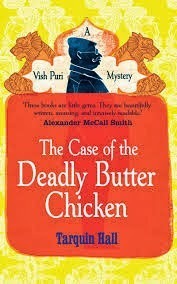 Like previous Vish Puri books, this one is not just a ripping detective story. It is also an educated look at life in India. Each of the books explores at length complex motifs of life in India, and in this one, cricket, and in particular corruption in cricket, is one of the main ones. Alongside this broad theme, the text is rich with incisive references to local specialties such as pharmaceutical mores (the cavalier manner in which medicine is prescribed and eagerly guzzled down in India); the Dubai-underworld connection; the utility of geckos pasted on Indian ceilings; other pointers that lead to broad explorations of Indian lifestyles and subtle inferences into the Indian psyche.
Like previous Vish Puri books, this one is not just a ripping detective story. It is also an educated look at life in India. Each of the books explores at length complex motifs of life in India, and in this one, cricket, and in particular corruption in cricket, is one of the main ones. Alongside this broad theme, the text is rich with incisive references to local specialties such as pharmaceutical mores (the cavalier manner in which medicine is prescribed and eagerly guzzled down in India); the Dubai-underworld connection; the utility of geckos pasted on Indian ceilings; other pointers that lead to broad explorations of Indian lifestyles and subtle inferences into the Indian psyche.
What made this book far more ambitious than the previous ones, almost terrifyingly so, is that here Tarquin Hall tackles the very complicated and intimate connection between India and Pakistan.
Like many Indians, indoctrinated to fear and hatred of an enemy country, Vish Puri is terrified when his detecting takes him across a border both quaint and deathly serious. Once there, his observations and experience transform his feelings. He finds it a place where smoking is still permitted in public places. People he meets are friendly and courteous (from the airhostess who’d assured him the plane wasn’t going to crash, to the hotel concierge who’d talked about how much he’d enjoyed visiting India last year). Puri, known to friends as ‘Chubby’ also has his world view significantly altered by a Lahori meal he would never forget as long as he lived (the marinated mutton so tender, so succulent that it melted in his mouth; the yoghurt-based gravy a perfect blend of coriander and chilli with just a hint of lemon, wiped up with crisp pieces of roghini naan, and every last bit of marrow sucked from the mutton bones).
Through Vish Puri’s indomitable Mummy, an accomplished detective herself, Tarquin Hall gives us little glimpses of what Partition did. Like remnants of any traumatic horror, these glimpses are compelling and very moving, and occasionally demanding the refuge of denial.
Once not very long ago, Tarquin Hall referred to his Vish Puri books as belonging to the genre of ‘detective cosies’. To me they are far more than cosies, there’s a specialised anthropological depth to them that I admire almost as much as I enjoy the quality of his detective fiction.

 Like previous Vish Puri books, this one is not just a ripping detective story. It is also an educated look at life in India. Each of the books explores at length complex motifs of life in India, and in this one, cricket, and in particular corruption in cricket, is one of the main ones. Alongside this broad theme, the text is rich with incisive references to local specialties such as pharmaceutical mores (the cavalier manner in which medicine is prescribed and eagerly guzzled down in India); the Dubai-underworld connection; the utility of geckos pasted on Indian ceilings; other pointers that lead to broad explorations of Indian lifestyles and subtle inferences into the Indian psyche.
Like previous Vish Puri books, this one is not just a ripping detective story. It is also an educated look at life in India. Each of the books explores at length complex motifs of life in India, and in this one, cricket, and in particular corruption in cricket, is one of the main ones. Alongside this broad theme, the text is rich with incisive references to local specialties such as pharmaceutical mores (the cavalier manner in which medicine is prescribed and eagerly guzzled down in India); the Dubai-underworld connection; the utility of geckos pasted on Indian ceilings; other pointers that lead to broad explorations of Indian lifestyles and subtle inferences into the Indian psyche.
Puri sipped his Scotch. It wasn’t as good as Indian whisky, he reflected. But Britishers enjoyed bland things. Like toad in the hole and depressing poetry about damp valleys and all. Such a strange people: highly civilised in many ways, yet with no fire burning in their bellies. Still, there was something gratifying about helping them out when they turned up in Delhi. Despite their inherent conceit, their fundamental belief in the superiority of Western civilization, they were always out of their depth here in India – trying to operate in a world that was impenetrable to them. “Welcome to the real world,” he often felt like saying to them. “Welcome to India!” And yet somehow Puri always found himself adopting a subservient manner when dealing with the British. India was free and independent, had been for more than sixty years now, but he couldn’t help trying to impress upon them that he, too, was civilized.
What made this book far more ambitious than the previous ones, almost terrifyingly so, is that here Tarquin Hall tackles the very complicated and intimate connection between India and Pakistan.
Like many Indians, indoctrinated to fear and hatred of an enemy country, Vish Puri is terrified when his detecting takes him across a border both quaint and deathly serious. Once there, his observations and experience transform his feelings. He finds it a place where smoking is still permitted in public places. People he meets are friendly and courteous (from the airhostess who’d assured him the plane wasn’t going to crash, to the hotel concierge who’d talked about how much he’d enjoyed visiting India last year). Puri, known to friends as ‘Chubby’ also has his world view significantly altered by a Lahori meal he would never forget as long as he lived (the marinated mutton so tender, so succulent that it melted in his mouth; the yoghurt-based gravy a perfect blend of coriander and chilli with just a hint of lemon, wiped up with crisp pieces of roghini naan, and every last bit of marrow sucked from the mutton bones).
Through Vish Puri’s indomitable Mummy, an accomplished detective herself, Tarquin Hall gives us little glimpses of what Partition did. Like remnants of any traumatic horror, these glimpses are compelling and very moving, and occasionally demanding the refuge of denial.
Once not very long ago, Tarquin Hall referred to his Vish Puri books as belonging to the genre of ‘detective cosies’. To me they are far more than cosies, there’s a specialised anthropological depth to them that I admire almost as much as I enjoy the quality of his detective fiction.

Published on November 04, 2013 23:04
September 4, 2013
The Professional by Ashok Ferrey
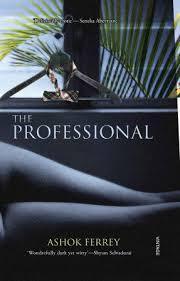
Jolly good
One of the things I enjoyed most about this book is the fact that its two heroes, who are so very different from each other, turn out to be the same person. It was a reminder of a fact we hardly ever acknowledge: that when we tell our own stories, we are actually telling the stories of the many different people we have been at different points in our lives. This device is beautifully done in The Professional.
In fact, this well-crafted and light-hearted book carries any number of such philosophical insights. The essential reality of being a ‘Professional’, for instance, highlights the critical link between our working and personal lives. How much of yourself should you really give? Chamath encounters this complexity in his chosen line of oldest profession in the world. Some of what he thinks and feels could even be adapted into a textbook on sex education:
If he was truly honest with himself, power was one of the reasons he liked his work as a professional so much. He had come to realise that often, sex was the least important part of a client’s requirements. What they really wanted was for you to possess their soul, take responsibility for their actions and inactions, justify their excesses, condone their weaknesses.
And:
This question of loneliness was beginning to bother him. He had neither less nor more friends now than he had ever had. So why did he feel so alone? The answer came to him. It’s the company I keep at night, he thought, the lives of complete strangers I am paid to inhabit, four hours at a time. It’s addictive. The more I have the more I need. It’s withdrawal symptoms I’m suffering from, not loneliness. And the sex? Is that addictive too? He felt a small stirring. Yes. The sex is addictive too.
Chamath has been educated at Oxford and the resulting manner in which he speaks can be an advantage but it can also be just an oddity. However, it doesn’t stop someone, at a high society ball, from flagging him down:
“Waiter,” he says. “Waiter! Two whisky and sodas over here, please.” And although you’ve been used to this all your London life, it’s still a knife in your back when it happens.
Colour is just as important in Sri Lanka too:
“Your brother’s very loud, isn’t he?” said Mr Gunapala.
“He’s not my brother.”
“Quite right,” said Mr Gunapala approvingly. He looked from one of them to the other. “Anyway, you’re much much darker than him. Have you tried Fair & Lovely?
“No,” said Chamath. “Now that you mention it, maybe I’ll give it a go.”
So this book is not just thought-provoking, it’s funny too. A blurb at the back by Shyam Selvadurai tells us that “Ferrey brings the greed and manic energy of the Thatcher era vividly to life.” To me, it was also quite a commentary on the hilarious aspects of the Third World. On our visits to Sri Lanka we see that Sakuntala’s housework was strangely like justice itself: more important that it was seen to be done than to actually be done. The landladies are Bar and Gin, daughters of the erstwhile Ginger Beer King of Bambalapatiya, and their lifestyle and banter as classic and endearing as those of Thomson and Thompson.
Back in London, Chamath visits his MP’s office. Among the stampeding charge of Afghans and Somalis, he tries to maintain a dignified pace, as a result of which he ends up with ticket number 47, ahead of two heavily pregnant women and a blind man with a cane.
The smoke of yesterday’s immigrants still hangs heavy in the air and the carpet holds the remains of a hundred impromptu picnics. There were rows of benches without backs (Lean back? Just where do you think you are?) and the fifty-odd candidates settled themselves in for the long haul. There were others coming in now, thick and fast, and the ones on the benches looked at them with ineffable superiority. (Even the blind man tapped his cane in a superior manner.)
In another scene, Chamath lies alone on the floor of his most-preferred clients’ sitting room and muses:
In the last twenty-four hours they’ve each warned me off against the other. There’s a turf war going on here. I am a small Third World country over which two superpowers are vying for supremacy, each slightly jealous of the other. I am happy for it to be this way. But I must be careful not to play one off against the other, causing war. There was a smile on his face as he closed his eyes. I could be a metaphor for Sri Lanka itself, he thought.
I enjoyed this book thoroughly and was all set to give it an enormous thumbs-up when, towards the end, it began to disappoint. I felt it was sliding to a horribly predictable end. For a while I tried to talk myself out of the disappointment, reasoning that very often others can see where we are heading before we see it ourselves and this could just be another of the clever strokes by the extremely talented Ashok Ferrey. However, I did feel let down by the ending – though not so let down that I couldn’t declare that I enjoyed this book thoroughly.
One amusing observation in my mind as I read, and even when I finished this book, was the strong aesthetic resonance here with the work of both Pakistani writer Mohammed Hanif and Indian writer Manu Joseph, and how very nice it was to have these charming torchbearers of wit in literary fiction for three neighbouring countries that sometimes have their differences.

Published on September 04, 2013 19:18
August 28, 2013
Durbar by Tavleen SinghThis book is a retrospective of th...
Durbar by Tavleen Singh
 This book is a retrospective of the events covered by high-profile Indian journalist Tavleen Singh from the beginning of her career in 1975 till the assassination of Prime Minister Rajiv Gandhi in 1991. The events are presented not just with the benefit of future perspective, but also from the perspective of Tavleen Singh’s personal likes and dislikes. This makes it more memoir than history book and while it makes the book more interesting, there are parts that I found quite irritating. One of the persistent refrains is her professional rivalry with MJ Akbar and I would be quite interested in reading MJ Akbar’s version of some of the events presented here. Through Tavleen Singh’s social circle, we also get a glimpse into the drawing rooms of some of the most wealthy and influential people in India. Most interesting are her portraits of Rajeev and Sonia Gandhi long before they entered political life. This book is easy to read and enjoyable. And it is also much more than a tract of juicy gossip, being a very useful reminder of important and useful historical facts. It traces the rising greed of Indian politicians from the early days of modest lifestyles after Independence. It reminds us of the period in which Sikhs suffered brutal treatment in India. It shows us many of the terrible mistakes made by Indian leaders, which have led to large-scale suffering and ruin.Most relevant of all, it highlights something we all know but choose to ignore. We call ourselves a democracy, but an alarmingly large number of our elected leaders were handed their positions down from their parents. In that sense we are not a democracy, because our political parties are largely in the hands of princes and princesses, the majority of them greedy and inept.Tavleen Singh blames Indira Gandhi for having endorsed this system but perhaps it is the honoured tradition of the importance of family and family values in India that are actually responsible. After all, most Indian corporate organizations, and the Bollywood film industry too, function the same way.
This book is a retrospective of the events covered by high-profile Indian journalist Tavleen Singh from the beginning of her career in 1975 till the assassination of Prime Minister Rajiv Gandhi in 1991. The events are presented not just with the benefit of future perspective, but also from the perspective of Tavleen Singh’s personal likes and dislikes. This makes it more memoir than history book and while it makes the book more interesting, there are parts that I found quite irritating. One of the persistent refrains is her professional rivalry with MJ Akbar and I would be quite interested in reading MJ Akbar’s version of some of the events presented here. Through Tavleen Singh’s social circle, we also get a glimpse into the drawing rooms of some of the most wealthy and influential people in India. Most interesting are her portraits of Rajeev and Sonia Gandhi long before they entered political life. This book is easy to read and enjoyable. And it is also much more than a tract of juicy gossip, being a very useful reminder of important and useful historical facts. It traces the rising greed of Indian politicians from the early days of modest lifestyles after Independence. It reminds us of the period in which Sikhs suffered brutal treatment in India. It shows us many of the terrible mistakes made by Indian leaders, which have led to large-scale suffering and ruin.Most relevant of all, it highlights something we all know but choose to ignore. We call ourselves a democracy, but an alarmingly large number of our elected leaders were handed their positions down from their parents. In that sense we are not a democracy, because our political parties are largely in the hands of princes and princesses, the majority of them greedy and inept.Tavleen Singh blames Indira Gandhi for having endorsed this system but perhaps it is the honoured tradition of the importance of family and family values in India that are actually responsible. After all, most Indian corporate organizations, and the Bollywood film industry too, function the same way.
Published on August 28, 2013 06:19
Durbar by Tavleen Singh
This book is a retrosp...
Durbar by Tavleen Singh

This book is a retrospective of the events covered by high-profile Indian journalist Tavleen Singh from the beginning of her career in 1975 till the assassination of Prime Minister Rajiv Gandhi in 1991. The events are presented not just with the benefit of future perspective, but also from the perspective of Tavleen Singh’s personal likes and dislikes. This makes it more memoir than history book and while it makes the book more interesting, there are parts that I found quite irritating. One of the persistent refrains is her professional rivalry with MJ Akbar and I would be quite interested in reading MJ Akbar’s version of some of the events presented here. Through Tavleen Singh’s social circle, we also get a glimpse into the drawing rooms of some of the most wealthy and influential people in India. Most interesting are her portraits of Rajeev and Sonia Gandhi long before they entered political life.
This book is easy to read and enjoyable. And it is also much more than a tract of juicy gossip, being a very useful reminder of important and useful historical facts. It traces the rising greed of Indian politicians from the early days of modest lifestyles after Independence. It reminds us of the period in which Sikhs suffered brutal treatment in India. It shows us many of the terrible mistakes made by Indian leaders, which have led to large-scale suffering and ruin.
Most relevant of all, it highlights something we all know but choose to ignore. We call ourselves a democracy, but an alarmingly large number of our elected leaders were handed their positions down from their parents. In that sense we are not a democracy, because our political parties are largely in the hands of princes and princesses, the majority of them greedy and inept.
Tavleen Singh blames Indira Gandhi for having endorsed this system but perhaps it is the honoured tradition of the importance of family and family values in India that are actually responsible. After all, most Indian corporate organizations, and the Bollywood film industry too, function the same way.

Published on August 28, 2013 06:19
August 12, 2013
Train to Delhi by Shiv K. Kumar
So the river had three banks
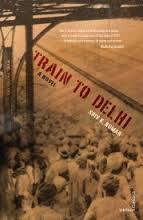 India has been freed by the British, but chopped into pieces. It is a time of hectic vendetta, with arson, rape and massacre being reported every day. Louis Mountbatten has been voluntarily installed as the first governor-general, and is so popular that he has become known as Pandit Mountbatten. In the interstices of the headlines, some significant and some ridiculous, ordinary people continue plodding on with their routines and their longings, and unlikely heroes are created. Gautam Mehta, nondescript journalist, is one of these. Through him, the author shows us a world not so very different from our own. And through Gautam’s conversion to Christianity, and through his love for a young Muslim woman, he also conveys the sheer imbecility of a world divided on religious lines.
India has been freed by the British, but chopped into pieces. It is a time of hectic vendetta, with arson, rape and massacre being reported every day. Louis Mountbatten has been voluntarily installed as the first governor-general, and is so popular that he has become known as Pandit Mountbatten. In the interstices of the headlines, some significant and some ridiculous, ordinary people continue plodding on with their routines and their longings, and unlikely heroes are created. Gautam Mehta, nondescript journalist, is one of these. Through him, the author shows us a world not so very different from our own. And through Gautam’s conversion to Christianity, and through his love for a young Muslim woman, he also conveys the sheer imbecility of a world divided on religious lines.
This book gives a strong sense of life on the streets during one of the most important periods of our recent history. It shows the rejoicing of common people along with their frustration against their corrupt and illogical new rulers. One of the things it highlights is the innate Indian tendency to adapt and contrive.
There was just one thing I didn’t like about this book, and that was its title. Why would this strong, original work be given a wannabe name? I went back to Train to Pakistan by Khushwant Singh, reading and enjoying it as much – more, actually – than before.
Both are set in the same period of history. Both are extremely well written; both sensitively depict the numerous urgent concerns of a brand-new nation. Both deploy sexual need as a recurrent theme. Looking back from our present vantage point, these books show us what has changed in our country in these 66 years - and so much that has remained the same. Both books are extremely important, because they remind us of essential facts in our recent history that we have too easily forgotten.
And yet, I found these books very different from each other. Train to Delhi has an urban setting and deals with urban concerns; Train to Pakistan is very much a village story. This reflects in the degrees of sophistication in each storyline too: the former is slick and filled with surprises, while the latter follows a rambling, earthy style, and is fairly predictable. One of the biggest differences is that Train to Pakistan is strewn with contextual explanations for non-Indian readers; Train to Delhi which was written in 1998, ten years later (a defining ten years for English writing from India), has none. And when the latter book was first published, it had a title far more charming and poetic: A River With Three Banks.

 India has been freed by the British, but chopped into pieces. It is a time of hectic vendetta, with arson, rape and massacre being reported every day. Louis Mountbatten has been voluntarily installed as the first governor-general, and is so popular that he has become known as Pandit Mountbatten. In the interstices of the headlines, some significant and some ridiculous, ordinary people continue plodding on with their routines and their longings, and unlikely heroes are created. Gautam Mehta, nondescript journalist, is one of these. Through him, the author shows us a world not so very different from our own. And through Gautam’s conversion to Christianity, and through his love for a young Muslim woman, he also conveys the sheer imbecility of a world divided on religious lines.
India has been freed by the British, but chopped into pieces. It is a time of hectic vendetta, with arson, rape and massacre being reported every day. Louis Mountbatten has been voluntarily installed as the first governor-general, and is so popular that he has become known as Pandit Mountbatten. In the interstices of the headlines, some significant and some ridiculous, ordinary people continue plodding on with their routines and their longings, and unlikely heroes are created. Gautam Mehta, nondescript journalist, is one of these. Through him, the author shows us a world not so very different from our own. And through Gautam’s conversion to Christianity, and through his love for a young Muslim woman, he also conveys the sheer imbecility of a world divided on religious lines.This book gives a strong sense of life on the streets during one of the most important periods of our recent history. It shows the rejoicing of common people along with their frustration against their corrupt and illogical new rulers. One of the things it highlights is the innate Indian tendency to adapt and contrive.
There was just one thing I didn’t like about this book, and that was its title. Why would this strong, original work be given a wannabe name? I went back to Train to Pakistan by Khushwant Singh, reading and enjoying it as much – more, actually – than before.
Both are set in the same period of history. Both are extremely well written; both sensitively depict the numerous urgent concerns of a brand-new nation. Both deploy sexual need as a recurrent theme. Looking back from our present vantage point, these books show us what has changed in our country in these 66 years - and so much that has remained the same. Both books are extremely important, because they remind us of essential facts in our recent history that we have too easily forgotten.
And yet, I found these books very different from each other. Train to Delhi has an urban setting and deals with urban concerns; Train to Pakistan is very much a village story. This reflects in the degrees of sophistication in each storyline too: the former is slick and filled with surprises, while the latter follows a rambling, earthy style, and is fairly predictable. One of the biggest differences is that Train to Pakistan is strewn with contextual explanations for non-Indian readers; Train to Delhi which was written in 1998, ten years later (a defining ten years for English writing from India), has none. And when the latter book was first published, it had a title far more charming and poetic: A River With Three Banks.

Published on August 12, 2013 04:05
June 15, 2013
I am an executioner by Rajesh Parameshwaran
That Dali feeling
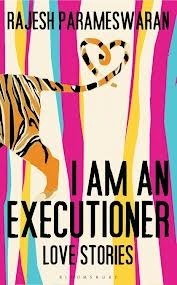 Most of us have a crazy guy living in our heads, and the best we can do is tame it to sit quietly right where it is. Rajesh Parameswaran, however, is the kind of genius who let that crazy guy out to do its thing, creating fascinating little planets, and here are some of them.
Most of us have a crazy guy living in our heads, and the best we can do is tame it to sit quietly right where it is. Rajesh Parameswaran, however, is the kind of genius who let that crazy guy out to do its thing, creating fascinating little planets, and here are some of them.
This book has nine stories, described on the cover as ‘love stories’. Conspicuous by their absence are certain critical contemporary icons of ‘love’ such as red roses and going down on your knee with a diamond ring in your hand. The Infamous Bengal Ming explores a tiger’s passion for his keeper. I’m not sure whether the author intended the central theme of this story to be the potential for miscommunication (and infliction of unintended hurt) in the relationship between any two creatures, but that’s what it brought to my mind. In Four Rajeshes we journey to a village railway station in British India and once again glimpse different kinds of doomed love. Of all the stories in this book, the one I enjoyed most was the title one, funny, sad, grotesque and gripping all at once. And of all the stories in this book, the only one slightly similar to anything I’d ever read before is Bibhutibhushan Mallik’s Final Storyboard, a tale that skirts the breach between aspiring craftsperson and artist at a pinnacle of achievement.
‘Literary masterpiece’ is a handy cliché; instead I might observe that the characters in this collection are lifelike and haunting. Most are so very fictional that it’s hard to mistake them for beings that bear a resemblance to anyone living or dead. As for the lyrical and highly stylized idiom, it appears fabricated too. Each story varies in language and structure – and each is so authentically vibrant that they may well reflect real speech patterns. This was a book that reminded me, after quite a while, how much pleasure reading can give.
Rajesh Parameswaran has apparently lived in the United States ever since he was an infant. His stories are international in flavour, and I enjoyed the cameo Indians and the Indian usages he introduces in unlikely universal situations.

 Most of us have a crazy guy living in our heads, and the best we can do is tame it to sit quietly right where it is. Rajesh Parameswaran, however, is the kind of genius who let that crazy guy out to do its thing, creating fascinating little planets, and here are some of them.
Most of us have a crazy guy living in our heads, and the best we can do is tame it to sit quietly right where it is. Rajesh Parameswaran, however, is the kind of genius who let that crazy guy out to do its thing, creating fascinating little planets, and here are some of them.This book has nine stories, described on the cover as ‘love stories’. Conspicuous by their absence are certain critical contemporary icons of ‘love’ such as red roses and going down on your knee with a diamond ring in your hand. The Infamous Bengal Ming explores a tiger’s passion for his keeper. I’m not sure whether the author intended the central theme of this story to be the potential for miscommunication (and infliction of unintended hurt) in the relationship between any two creatures, but that’s what it brought to my mind. In Four Rajeshes we journey to a village railway station in British India and once again glimpse different kinds of doomed love. Of all the stories in this book, the one I enjoyed most was the title one, funny, sad, grotesque and gripping all at once. And of all the stories in this book, the only one slightly similar to anything I’d ever read before is Bibhutibhushan Mallik’s Final Storyboard, a tale that skirts the breach between aspiring craftsperson and artist at a pinnacle of achievement.
‘Literary masterpiece’ is a handy cliché; instead I might observe that the characters in this collection are lifelike and haunting. Most are so very fictional that it’s hard to mistake them for beings that bear a resemblance to anyone living or dead. As for the lyrical and highly stylized idiom, it appears fabricated too. Each story varies in language and structure – and each is so authentically vibrant that they may well reflect real speech patterns. This was a book that reminded me, after quite a while, how much pleasure reading can give.
Rajesh Parameswaran has apparently lived in the United States ever since he was an infant. His stories are international in flavour, and I enjoyed the cameo Indians and the Indian usages he introduces in unlikely universal situations.

Published on June 15, 2013 05:24
May 30, 2013
Escape from Harem by Tanushree Podder
Khurram, Arjumand, and others
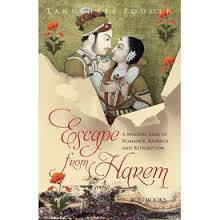 Zeenat, a young girl whose mother happens to work in the harem of Jahangir, catches the fancy of the Mughal emperor. This story is about what happens to her and how she copes with the way her life turns out. Through Zeenat we get a glimpse into a Mughal harem – the luxury, the pain of captivity, the intrigue, the ruthlessness. Tanushree Podder also takes us out into the countryside and gives us a strong sense of this period of history and its geography, and the lives and struggles of the ordinary people. I asked about her sources for the book and how much was imaginary and how much pure fact. She replied:
Zeenat, a young girl whose mother happens to work in the harem of Jahangir, catches the fancy of the Mughal emperor. This story is about what happens to her and how she copes with the way her life turns out. Through Zeenat we get a glimpse into a Mughal harem – the luxury, the pain of captivity, the intrigue, the ruthlessness. Tanushree Podder also takes us out into the countryside and gives us a strong sense of this period of history and its geography, and the lives and struggles of the ordinary people. I asked about her sources for the book and how much was imaginary and how much pure fact. She replied:
Some years ago, I read this sentence in a school textbook: “Unfortunately, most of the masterpieces in art in India have been destroyed by the idol-smashing Muslim rulers.”
This books makes an interesting read. But to me it has the infinitely greater value of giving its readers a better sense of perspective of what the people of India inherited from their ‘Muslim rulers’.

 Zeenat, a young girl whose mother happens to work in the harem of Jahangir, catches the fancy of the Mughal emperor. This story is about what happens to her and how she copes with the way her life turns out. Through Zeenat we get a glimpse into a Mughal harem – the luxury, the pain of captivity, the intrigue, the ruthlessness. Tanushree Podder also takes us out into the countryside and gives us a strong sense of this period of history and its geography, and the lives and struggles of the ordinary people. I asked about her sources for the book and how much was imaginary and how much pure fact. She replied:
Zeenat, a young girl whose mother happens to work in the harem of Jahangir, catches the fancy of the Mughal emperor. This story is about what happens to her and how she copes with the way her life turns out. Through Zeenat we get a glimpse into a Mughal harem – the luxury, the pain of captivity, the intrigue, the ruthlessness. Tanushree Podder also takes us out into the countryside and gives us a strong sense of this period of history and its geography, and the lives and struggles of the ordinary people. I asked about her sources for the book and how much was imaginary and how much pure fact. She replied:
I pored through dozens of historical tomes: the accounts written by European travellers like Francois Bernier and historians like Sir Jadunath Sarkar and R. Nath; the Jahangir Nama; books like The Mughal Empire from Babar to Aurangzeb by S. M. Jaffar; The Empire of the Great Mughals, History, Art and Culture by Annemarie Schimmel. The history and events are absolutely factual, only the protagonist is imaginary. I wanted to portray the entire story through the eyes of a harem inmate so I invented Zeenat.
Some years ago, I read this sentence in a school textbook: “Unfortunately, most of the masterpieces in art in India have been destroyed by the idol-smashing Muslim rulers.”
This books makes an interesting read. But to me it has the infinitely greater value of giving its readers a better sense of perspective of what the people of India inherited from their ‘Muslim rulers’.

Published on May 30, 2013 22:58



